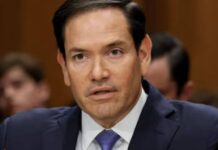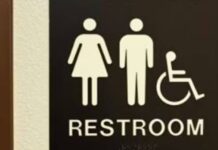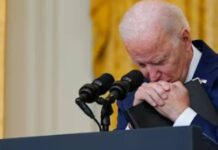
The Democrats were dealt a major blow in 2024. They aren’t getting any traction ahead of the 2026 midterms either.
That’s why the Democrat Party is on bankruptcy alert and their HQ is in full panic mode.
The Democratic National Committee (DNC) announced on Monday that it collected $8.6 million in June, a figure significantly lower than the $16.2 million raised by the Republican National Committee (RNC) during the same period. This fundraising gap highlights a stark divide between the two parties as they gear up for the 2026 midterm elections.
According to The Hill, the RNC currently holds $80.8 million in its reserves, dwarfing the DNC’s $15.2 million. Despite the disparity, Democrats framed the June haul as a success, noting it was the DNC’s strongest grassroots fundraising effort for a June in a non-election year.
“Around the country, people are energized, ready to fight back, and empowering Democrats to win elections,” DNC Chairman Ken Martin said in a statement. “The DNC is breaking grassroots fundraising records, bringing on more volunteers than ever, and raising record-setting funds to beat Republicans. Democrats are back in the ring thanks to grassroots energy across all 50 states, and together, we’re going to defeat the toxic Republican agenda and put this country back on track for hard-working families.”
The DNC also reported a surge in volunteer engagement, with over 30,000 individuals signing up to support the party’s efforts. The fundraising figures come at a time when Democrats are grappling with internal divisions following a significant setback in the 2024 election. Former Vice President Kamala Harris was defeated in her presidential campaign, and Republicans secured control of both the House and Senate.
The Democratic Party faces a steep uphill battle to restore its credibility after a resounding rejection by voters in the 2024 elections. The loss of the presidency and both chambers of Congress has left the party reeling, with fundraising deficits and internal divisions compounding the challenge. The DNC’s June 2025 fundraising total of $8.6 million, while notable for a non-election year, pales in comparison to the RNC’s $16.2 million, signaling a financial disadvantage as the 2026 midterms loom. With the RNC holding $80.8 million in reserves compared to the DNC’s $15.2 million, Democrats are struggling to match the GOP’s financial momentum.
The 2024 election results exposed deep vulnerabilities within the Democratic Party. Former Vice President Kamala Harris’s failed presidential bid, coupled with Republican gains in Congress, showed a disconnect between the party’s messaging and the priorities of the American electorate. Political analysts point to voter frustration over issues like inflation, border security, and cultural debates as key factors in the Democratic losses. A July 2025 report from Politico noted that 52% of voters surveyed felt Democrats had lost touch with working-class concerns, a sentiment that fueled Republican victories in swing states.
To rebuild credibility, Democrats must address their eroded trust with key demographics, including blue-collar workers, suburban voters, and minority communities. The party’s reliance on progressive policies that appealed to urban liberals alienated moderate voters, according to a post-election analysis by The Washington Post.
For instance, exit polls showed that 60% of Latino voters in battleground states like Florida and Texas shifted toward Republicans in 2024, a significant departure from previous election cycles. This erosion of support highlights the need for Democrats to craft a more inclusive platform that resonates with diverse constituencies.
The DNC’s claim of grassroots enthusiasm, with 30,000 volunteers and a record-breaking June fundraising haul for an off-year, offers a glimmer of hope. However, the party’s financial struggles suggest that enthusiasm alone may not suffice. The RNC’s robust war chest allows it to invest heavily in advertising, voter outreach, and candidate recruitment, areas where Democrats risk falling behind.
A June 2025 analysis from Bloomberg indicated that Republican ad spending in key battleground states already outpaces Democratic efforts by a 2-to-1 margin, a trend that could solidify GOP gains if Democrats fail to close the gap.
Internal divisions further complicate the Democratic recovery. Progressive and moderate factions within the party remain at odds over policy priorities, with debates over issues like healthcare reform and climate initiatives creating public rifts. A July 2025 article from The New York Times highlighted tensions at a DNC strategy meeting, where progressives pushed for bold reforms while centrists urged a return to pragmatic messaging. This lack of cohesion risks alienating voters who seek a unified vision, as Republicans capitalize on a streamlined, populist-driven agenda.
To regain traction, Democrats must prioritize rebuilding trust through tangible policy solutions. Analysts suggest focusing on economic issues, such as job creation and cost-of-living relief, which resonate broadly with voters. A 2025 Pew Research study found that 68% of Americans prioritize economic stability over social issues, a shift from previous years. Democrats could also benefit from highlighting Republican policy missteps, such as controversial tax cuts or healthcare proposals, to regain ground in swing districts.
Leadership changes may also play a role in the party’s recovery. DNC Chairman Ken Martin’s optimistic rhetoric about grassroots energy is a start, but some strategists argue for fresh faces to lead the party’s messaging. A July 2025 CNN report suggested that emerging leaders like Michigan Governor Gretchen Whitmer or Pennsylvania Senator John Fetterman could help rebrand the party as more relatable to working-class voters. Their ability to connect with Rust Belt constituencies could prove critical in battleground states.
The road to 2026 will test the Democrats’ ability to adapt. Without a clear strategy to address voter concerns, unify the party, and close the fundraising gap, the DNC risks further losses. The party’s ability to leverage its grassroots momentum into a coherent, voter-focused campaign will determine whether it can regain the trust of the American people and mount a comeback.



















